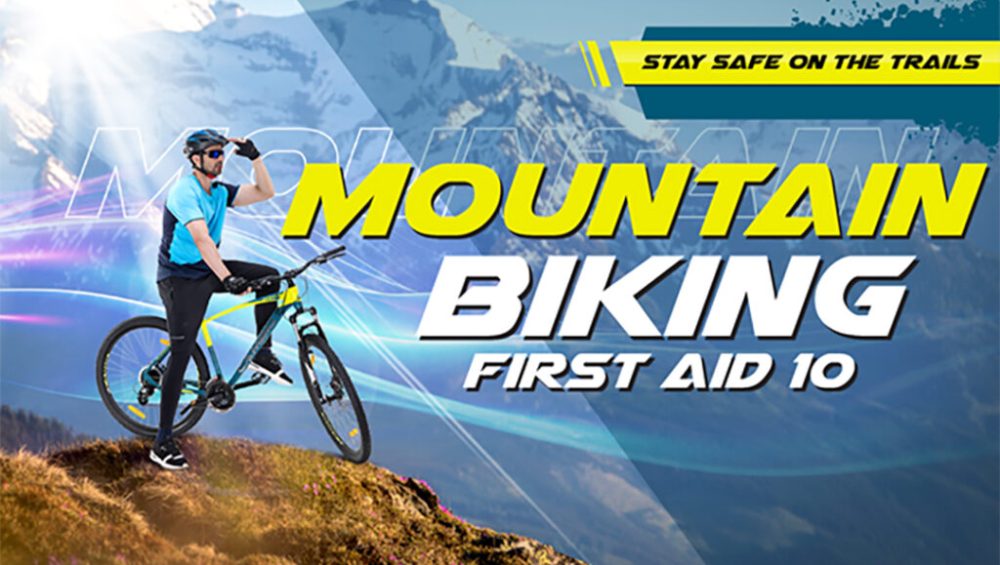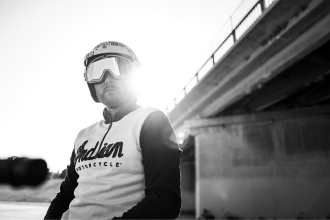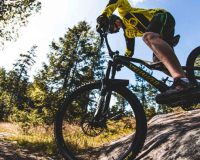Just like any sport, mountain biking has its risks. Whether it’s a casual ride along a straight, flat road or a rocky descent down a treacherous trail, odds are good that you will get hurt. Whether you buy a cycle or own one, a good first aid kit is necessary. That’s why a mountain biking first aid kit should be in every rider’s pack or at least in the car if you’re not going on a big ride. Riding a mountain bike is a source of joy, but one needs to be careful to enjoy it to the fullest.
As the saying goes, “Prevent and prepare, don’t repent and repair.” You must always be prepared as you can’t be sure what surprises the next trail carries. The need to cut weight as you go on long treks is there, but you want to have basic stuff that can protect you in the event of adversity. Here are some of the essential items we recommend you pack–whether you’re out for a leisurely ride or an intense trail run.
- Adhesive Bandages: These are used for minor cuts, scrapes, and blisters.
- Sterile Gauze Pads: These are utilized to clean and cover wounds.
- Antiseptic Wipes: For cleaning wounds and preventing infection.
- Medical Tape: Used to secure gauze and dressings in place.
- Tweezers: Useful for removing splinters or debris.
- Scissors: For cutting tape, gauze, and clothing if needed.
- Disposable Gloves: To protect yourself and others while giving first aid.
- Pain Relievers: Over-the-counter pain relievers like ibuprofen aids with pain and inflammation.
However, the place you are heading to plays an important role in deciding the course of first aid kit to carry.
The choice of the trail influences the biking difficulty. It impacts safety, and required skills are needed to ensure your safety. If you are an amateur cyclist, it becomes all the more important as you want to ensure your safety is not compromised.
The remote paths increase self-sufficiency needs due to limited assistance availability. Imagine getting injured at a remote place with no one to support you. Such thoughts are scary, and you don’t want to get stuck in such a situation. The first aid biking kit becomes necessary as you are your only help to at least be in a situation to carry yourself to a safe destination.
Moreover, diverse locations mean varied weather, which affects your riding conditions and preparedness. The muddy terrains increase difficulty and the chances of a crash increase multifold. A brutal crash in rainy conditions can be life-threatening, amplifying the need for a first-aid kit.
A big aspect of MTB biking is altitude changes since you are riding on inclines and declines regularly. In such a scenario, your physical performance might be impacted, leading to potential fatigue or altitude sickness.
In a nutshell, you should always keep a first aid kit handy, but in hindsight, opt for suitable roads to prevent accidents, affecting safety and enjoyment.
Different first aid safety equipment is required when encountering cuts, scrapes, bruises, and bones.
Cuts and Scrapes
Long-term mountain biking will always result in crashes, no matter how big or small. The wrists, knees, and, in unlucky cases, the chin are the most prevalent sites for cuts and scratches
Cuts and scrapes are part and parcel of mountain cycling as you traverse treacherous terrains. Rough terrains and obstacles can lead to falls and collisions. Increased chances of getting cuts and scrapes on exposed skin as Biking at higher speeds increases impact force during accidents.
Moreover, getting cuts and scrapes during falls due to inexperience or taking risks can lead to losing control. Skin can be punctured, leading to cuts and scrapes.
Minor cuts and scrapes from gentle falls are superficial wounds that need cleaning and covering. Adhesive bandages and antiseptic wipes are useful in the event of such scrapes to avoid infection.
Bruises and Bone Injuries
A forceful landing will leave a bruise, which may appear immediately or take a few hours or days to develop into a fully discolored shiner. But watch out for bruising. A more responsible part of you realizes that a large bruise could indicate an underlying bone problem. A part of you wants to wear a bruise as a badge of honor to demonstrate the severe damage you experienced on the route.
A mild bruising from minor falls or bumps can cause skin discolouration and mild discomfort. It might result in skin discolouration or discomfort. An effective solution will be to carry over-the-counter pain relievers to ensure quick recovery and travel to a safe place.
In addition, severe bone injuries like fractures or dislocations can result in pain, swelling, deformity, and loss of function. Stabilization tools (splints, SAM splints) and triangular bandages for immobilization can be beneficial.
In mountain biking, where exhilaration meets adventure, the importance of carrying a well-equipped first aid kit cannot be overstated. Every twist and turn of the trail brings the potential for unexpected challenges, from minor cuts and bruises to more serious injuries. A comprehensive first aid kit tailored to mountain biking demands ensures you’re ready to face these challenges head-on.
At Cambio Bikes, we understand the heart-pounding excitement of mountain biking, and we’re dedicated to your safety. Our range of high-quality mountain bikes is designed to elevate your riding experience while keeping your safety in mind. As you gear up for your next biking expedition, remember that having a reliable first aid kit is just as important as having the right mountain bike cycle.
So, when you’re ready to buy a cycle that complements your passion for mountain biking, explore Cambio’s collection.
The bicycle price is competitive with all the bells and whistles attached, making it value for money. Your safety and adventure go hand in hand – choose Cambio bikes today and ride with confidence.







